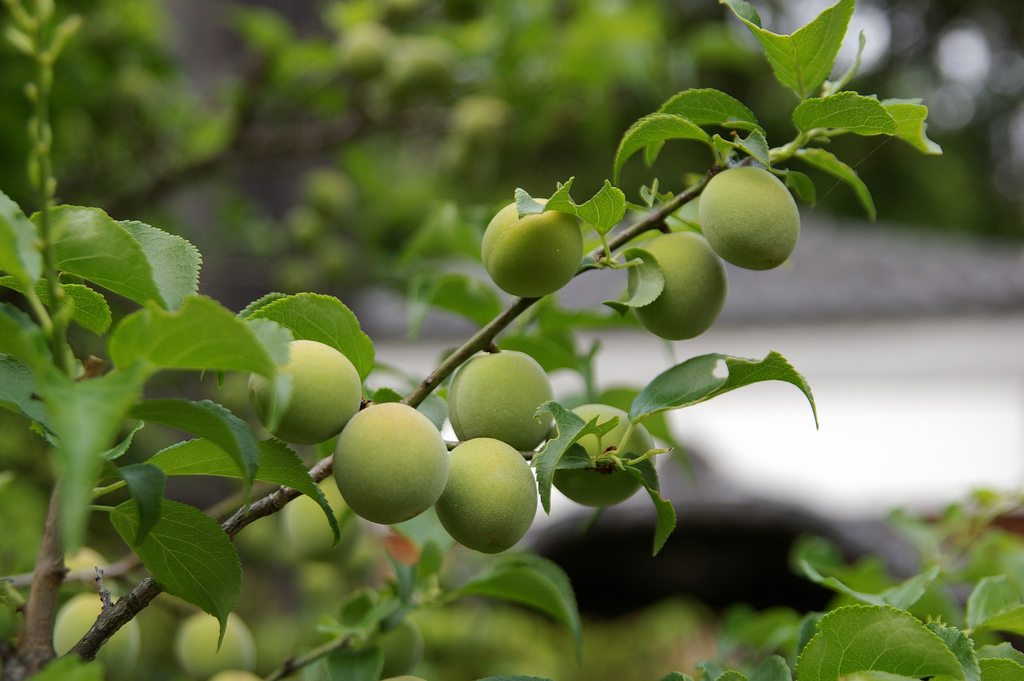Satsuma Plum Care: Learn About Japanese Plum Growing

Adaptable, reliable producers, compact in habit and minimally maintained compared to other fruit trees, plum trees are a welcome addition to the home garden. The most common variety grown worldwide is European plum, which is primarily turned into preserves and other cooked products. If you want a juicy plum to eat right off the tree, the choice is most likely a Satsuma Japanese plum tree.
Japanese Plum Information
Plums, Prunoideae, are a sub-member of the family Rosaceae, of which all stone fruits such as peach, cherry, and apricot are members. As mentioned, Satsuma Japanese plum tree produces fruit that is most commonly eaten fresh. The fruit is larger, rounder, and firmer than its European counterpart. Japanese plum trees are more delicate as well and require temperate conditions. Japanese plums originated in China, not Japan, but were brought to the U.S. via Japan in the 1800s. Juicier, but not quite as sweet as its European cousin, ‘Satsuma' is a large, dark red, sweet plum prized for canning and eating right off the tree.
Japanese Plum Growing
Satsuma Japanese plums are fast growing, but not self-fertile. You will need more than one Satsuma if you want them to bear fruit. Good choices for companion pollinating plum trees are, of course, another Satsuma or one of the following:
- “Methley,” a sweet, red plum
- “Shiro,” a large, sweet vibrantly yellow plum
- “Toka,” a red hybrid plum
This plum varietal will reach a height of about 12 feet (4 m.). One of the earliest blooming fruit trees, it flowers in late winter into the early spring with a multitude of aromatic, white blossoms. You will need to select a full sun area, which is large enough to accommodate two trees. Japanese plum trees are frost sensitive, so an area that lends them some protection is a good idea. Japanese plum growing is hardy to USDA growing zones 6 to 10.
How to Grow Satsuma Plums
Prepare your soil as soon as it is workable in the spring and amend it with plenty of organic compost. This will aid in drainage and add necessary nutrients into the soil. Dig a hole three times larger than the root ball of the tree. Space the two holes (you need two trees for pollination, remember) about 20 feet (6 m.) apart so they have room to spread. Position the tree in the hole with the top of the graft union between 3 and 4 inches (8-10 cm.) above ground level. Fill the hole in halfway with soil and water in. Finish filling in with soil. This will eliminate any air pockets around the root system. Mound the filled soil in around the top of the root ball and tamp down with your hands. Water with a drip irrigation system which will ensure it gets a deep, thorough watering. One inch (2.5 cm.) of water per week is sufficient in most weather; however, in warmer weather you will need to water more often. In the spring, fertilize with a 10-10-10 food and then again in the early summer. Simply sprinkle a handful of fertilizer around the base of the plum and water in well. Don't go nuts on the pruning in the first couple of years. Allow the tree to reach its mature height. You may want to prune any branches that cross in the middle or grow straight through the center of the tree to increase aeration, which allows for better fruit set as well as easier picking.
Gardening tips, videos, info and more delivered right to your inbox!
Sign up for the Gardening Know How newsletter today and receive a free copy of our e-book "How to Grow Delicious Tomatoes".

Amy Grant has been gardening for 30 years and writing for 15. A professional chef and caterer, Amy's area of expertise is culinary gardening.
-
 4 Superfast Composting Methods: Turn Waste Into Garden Gold In 30 Days Or Less
4 Superfast Composting Methods: Turn Waste Into Garden Gold In 30 Days Or LessTry the fastest composting methods to turbocharge your pile and transform kitchen scraps and garden waste into finished compost in just a few weeks.
By Mary Ellen Ellis
-
 Best Spider Plant Soil – Complete Soil Guide And Expert Tips For Keeping Plants Happy
Best Spider Plant Soil – Complete Soil Guide And Expert Tips For Keeping Plants HappySpider plants are fun and easy plants to grow, but what is the best soil for a spider plant? Selecting the right soil is important so they can thrive.
By Bonnie L. Grant